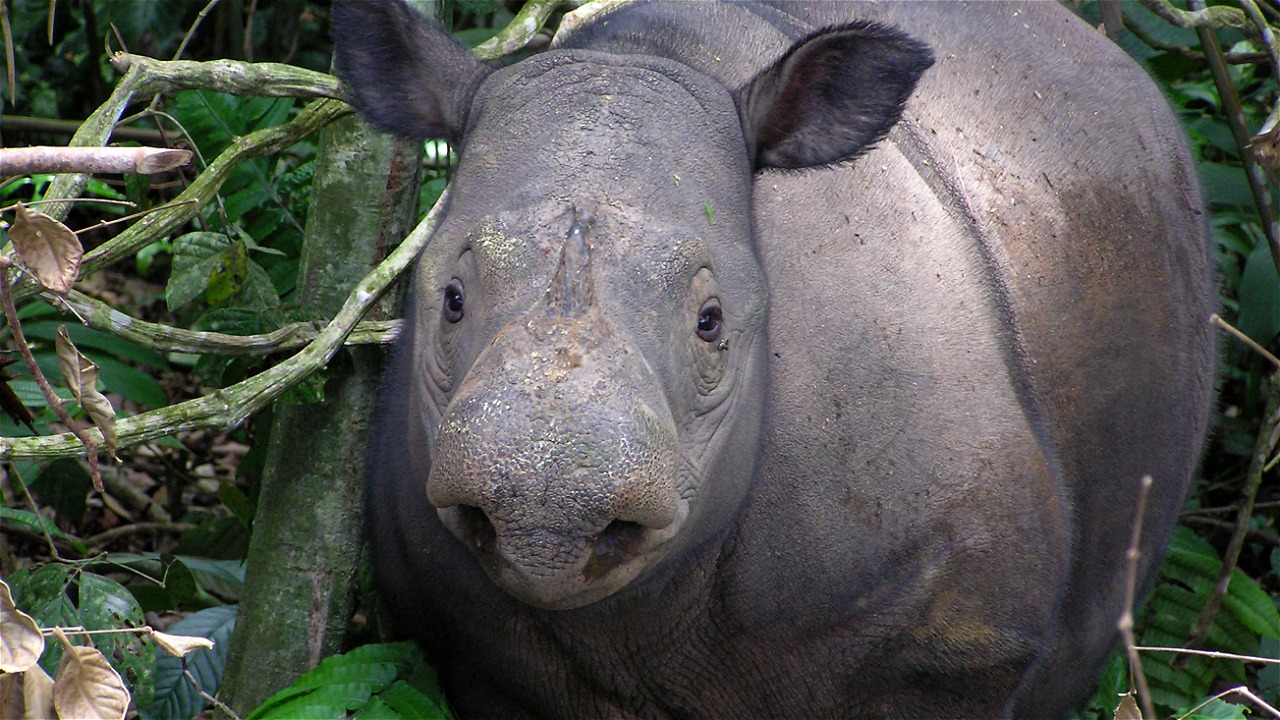DISEASE THREATENS RHINO POPULATION
By: Nur Arinta
Sumatran Rhino (Dicerorhinus sumatrensis) and Javan Rhino (Rhinoceros sondaicus) are two rhino species that live in Indonesia. Data from the world conservation organization, IUCN (International Union Conservation Network) states that Sumatran Rhinos and Javan Rhinos are classified as Critically Endangered. This is reinforced by data from the Ministry of Environment and Forestry which states that the Sumatran Rhino population is now less than 100 individuals, while the Javan Rhino population in nature is now only 68 individuals.
The main threat to the rhino population in Indonesia is fragmented habitat. Another threat that is also very crucial is disease. Quoted by various sources, some of the diseases that threaten the rhino population are blood disorders, such as excess iron and also blood parasites.
Reported by mongabay.co.id, there have been cases of Sumatran rhinos suffering from metabolic disorders in the form of iron accumulation in their blood. Iron accumulation in these rhinos is usually located in the liver and kidneys. This condition of iron overload in large mammals is caused by food limitations, especially in terms of quantity and variety. This metabolic disorder is not a contagious disease, but it can lead to death if habitat management measures are not taken.
As the Javan Rhino habitat is fragmented due to the invasion of Langkap plants, it has a lot of impact on the variety of rhino food. The smaller the variety and number of plants consumed by rhinos, the greater the potential for rhinos to suffer from metabolic disorders.
Another disease that threatens the population of this hairless rhino species is infection from the protozoan Trypanosoma evansi. Tripanosoma is a type of protozoan that attacks red blood cells. Originally discovered by a researcher named Evans in 1880 in India, it was initially found in horses and gradually revealed that it threatens almost all warm-blooded animals, including rhinos.
Initially this disease was considered harmless because cases of Sumatran Rhino deaths due to this disease were very rare. But after several cases of death of Sumatran and Javanese Rhinos, it was found that the cause was this blood parasite. Finally this disease is considered a very dangerous disease for the preservation of the smallest rhinos. Trypanosomiasis, a disease caused by Trypanosoma evansi, is a disease carried by blood-sucking flies of the Tabanidae group.
Flies are the carrier factor or animals like mosquitoes in dengue fever.
Animals infected with Trypanosomiasis usually show symptoms such as lazy movement, increased body temperature, decreased appetite, and decreased body weight. If the animal is weak, especially during the rainy season, it can die within a short period of time, namely one or two days after contracting the bacteria.
According to National Geographic, there are many cases of rhino deaths caused by Trypanosomiasis. In 2003, five Sumatran rhinos were found dead in Sungai Dusun Sumatran Rhino Conservation Center, Selangor, Malaysia. Not stopping there, in 2010, three Javan Rhinos were found dead in Ujung Kulon National Park (TNUK). Investigations by the TNUK Center together with WWF-Indonesia showed that flies carrying the T. evansi bacteria infected the rhinos.
How to prevent this deadly disease for rhinos? To prevent metabolic disorders in rhinos, the variety of rhino food plants needs to be maintained. This is related to rhino habitat, which must always be maintained in good quality and provide an abundant variety of rhino plants. Regarding Trypanosomiasis, prevention can be done by increasing the awareness of people living around rhino habitats to maintain the health of their livestock and prevent livestock from entering the conservation area.
In the book Indonesian Rhino Conservation Techniques published in 2003, it was explained that the presence of blood parasites such as T. evans can be known by periodic examination of blood samples. Therefore, the possibility of Trypanosomiasis can be recognized as early as possible.
Along with the desire to keep rhino species in Indonesia sustainable, WWF-Indonesia continues to make efforts to overcome and save rhinos from deadly diseases. Efforts to plant a variety of rhino food plants in their habitat, prevent community livestock from entering the area by providing understanding to the community. Not only WWF-Indonesia, you will also not let rhinos become extinct in the future, right? Continue to support WWF-Indonesia and take positive actions such as choosing sustainable forest products to make the rhino population continue to exist for future generations.





